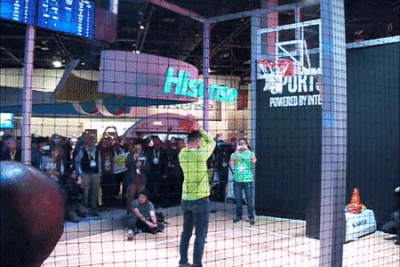
VR, AR, Drones, and inter-industry innovation.
CES 2018 – What to Expect and What We’re Excited For
by Matt Gwin and Patrick Jones
Vocatio is headed again to Las Vegas for CES 2018 next week, partnering with Circa Campus to take you inside the event and share with you the vast range of industries, companies, and opportunities. CES, of course, is a sort of Mecca for tech enthusiasts; a convening every year where any company who has anything to do with technology comes to show off their new offerings and innovations.
It attracts over 4,000 exhibiting companies and almost 200,000 visitors.
From Sony to Spotify, from Amazon to Underarmour, IBM to BMW, almost any company you can think of – along with thousands of startups you haven’t heard of— will have something to show and tell. Here’s what I’m most looking forward to:
Applying Technology to Better the World
It’s easy to get caught up in the strict technological advancement — the bigger, better, faster, thinner, realer. But the real good that comes from tech is when people take those innovations and advances and then apply that technology to try to solve a problem and help people. My favorite part about last year’s CES was the products that did just that.
Many of these are health-related: last year we saw highlights such as smart watches to help with sleep apnea, glasses to recognize faces for the visually impaired, at-home rehabilitation gloves for stroke victims. There was a device to translate sign-language in real time, and one to make smartphones accessible for the blind. In education, we saw a wide-variety of coding-related toys, such as Ozobot and KUBO. We saw VR designed at helping us empathize with refugees, and a robot to help special needs kids improve social skills.
Easy to get caught up in faster, thinner, realer. But the real good is applying the tech to help people Share on X
Drones
The drone section of the expo floor was seemingly endless last year. Drones were everywhere and they were all cool, but they all looked pretty similar and did the same things — fly around with a camera attached. Given the saturation of that market, I’m really excited to see the new directions and next steps they take this year.
It’s like VR — once the race to achieve a level of hardware that seemed truly immersive and realistic concluded, the real interesting developments began, as people experimented with all the cool things they could do with it. Now that drones have reached a plateau in terms of flying around, it will be interesting to see the creative new use cases.
Speaking of VR…
Where VR will go next
Last year at CES the coolest developments in VR had nothing to do with hardware, and were all about new uses of VR – for storytelling, for journalism, for empathy training, or for emergency response simulations. Hopefully we’ll see an acceleration of this innovation and see some great new VR applications.
Will the dedicated headsets ever become cheap enough or in-demand enough to move past the hardcore gaming world into everyday households? Will any of the new uses inspire people to finally buy the phone-dependent headsets that have been available for several years now? Or is the real mass-market future in AR rather than VR?
AR
Ever since Pokemon Go took the world by storm, everyone has been waiting for the widespread proliferation of augmented reality in other applications. This will be one of the most exciting things to see at CES, is the new applications of AR and the new hardware to enable it. Experts are predicting the focus will shift to AR from many companies that focused more on VR in previous years, so there should be plenty of innovation to look out for.
Robots
A lot of the robots at CES last year seemed childish and gimmicky – “cute” little things that could dance and move around and perform a task or two, but that didn’t really seem useful—just tablets with bodies.
One of the big advance teasers for this year’s conference has been LG’s announcement of their new service-industry robots, designed to serve food and drinks, offer assistance in hotel lobbies, and other similar functions. I’m interested to see how person-like they try to make them, how people respond to them, and how people react to their possible implications toward the future of work and the millions of service industry jobs.
Sports
Sports tech is a big market now — pro sports teams and major college programs are employing wearables in practice and embracing biometrics as a new way to gain an edge and increase performance.
Last year, we saw recovery-inducing sleepware, smart shoes, and numerous biometric tracking wearables.
In addition, there’s a whole other segment addressing how we watch and interact with sports, allowing for 360* interactive replays, VR in-arena experiences, and more. I’m excited to see what futher advances have been made in the last year.
Blending of Industries
Every company is a tech company nowadays. Companies that you might think of as hardware companies or appliance companies might now be at the forefront of autonomous or connected vehicles, or cybersecurity, or sports analytics. Since Big Data and machine learning can generally be used to improve almost anything, the companies who work with it–Intel, IBM, Google, and the like–are seemingly involved in almost everything. Intel had a basketball court in their exhibition area last year, to show off some of their sports-related offerings. IBM’s had a car.
Companies that started as apps or websites are making physical products. Companies that used to make doorknobs are working on smart-home cybersecurity. Those that used to make spark plugs are working on connected cars. It’s a new world, with less clear divisions between industries, and with tech infiltrating everything.
CES 2018 kicks off Tuesday, January 8 — check back next week for our updates, videos, and thoughts!




Comments are closed.